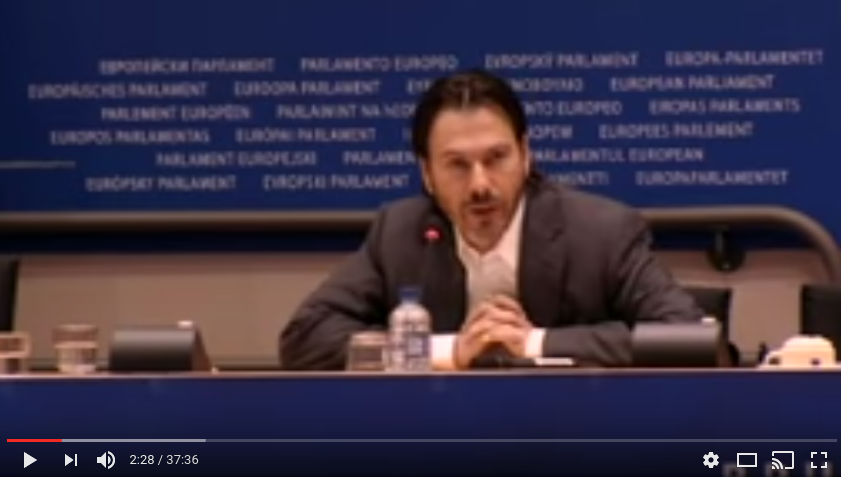Applying Thinking Fast & Slow By Daniel Kahneman To Digital Analytics

This is content marketing advice.
Thoughts and notes on the book Thinking Fast & Slow by Professor of Psychology Daniel Kahneman on cognitive biases of intuition, and exploration into the validity of this concept when approaching digital analytics. How can we use this thinking to improve our own online marketing?
Here we talk about tackling biases of intuitive thinking when approaching digital analytics. It includes the thoughts on Kahneman's paper "Judgment Under Uncertainty: Heuristics and Biases" co-authored with Amos Tversky which identifies key biases in decision making.
The Availability Heuristic
Do we just arrive at a decision because of the information we've had previously presented to us? For example, perhaps adultery among politicians is reported more in the news than in other professions. Does that tend to skew people’s assumptions when forming their opinions compared to people of other professions?
"People tend to assess the relative importance of issues by the ease with which they are retrieved from memory—and this is largely determined by the extent of coverage in the media." - Daniel Kahneman
People tend to assign more credible weighting to 'facts' which are more easily and readily available from memory than lesser available information. Information which is seen online, or through news outlets influences the readiness of information which can create bias in the weight that people attribute to facts.
People tend to assign more credible weighting to 'facts' which are more easily and readily available from memory than lesser available information.
How The Availability Heuristic Applies To Online Marketing
Consider how this might be applied to an awareness campaign online. Consider this as a way to appreciate the "Impressions Metric” which is so much harder to attribute direct returns to, than a highly traceable Adwords-type "clicks vs conversion" metric where measuring the return on investment is muh more instant.
The Availability Heuristic is the mushy stuff that frustrates online Analytical tools like Google Analytics. It results in awareness marketing getting wrongly downplayed on budget decisions because it's truly hard to measure this stuff: just how fast can customers relate your brand to something in their mind? How much information is too much information or too often? Did we seek their permission?
Let's face it; brand recognition is happening a lot less for your company than you'll comfortably admit. Aiding this with the presence of the availability heuristic justifies a spend toward this sort of online marketing. Awareness marketing is no more a 'let’s stick our finger in the air’ exercise, however. It manifests itself in the form of paid online advertising: re-marketing, and paid posts, which focus on impressions or number of readers rather than number of conversions. Plus, it is possible to track return on investment on these sorts of marketing efforts, it just takes more time.
How? These are known as 'View-Through-Conversions' or the 'Conversion Window' which simply refer to the time between when people see your message, to the time they take a desired action. This can be measured. In Google Adwords terminology, the conversion window can be tracked back as far as 90 days allowing you to get a feel for how much impact the information you provide has on sale.
Things to be cautious of when doing Content Marketing
Remember to communicate only valid, helpful and useful information. Be conscious that people respond better to information they've asked for and not pushy media. You are facilitating demand not providing information for the sake of it. Simon Anholt's keynote talk defines this beautifully, pointing out that when "communication" is done correctly it can only then have any hope of being listened to:
"Information provision is only possible when there is a demand for information. In other words, if the people out there have asked you for information, on a topic about which they feel they need more information, and they have asked you to provide it, then the provision of information is legitimate, necessary, and arguably a duty." - Simon Anholt EuroPCom 2011

If the information you're creating doesn't fall under the above, you are wasting your time and money. Make sure the content or advertising copy you're writing is demanded and on a subject people are interested in.
Law of least effort
Finally, make your information easily accessible. Do you really need to put an email address collection barrier between you and your potential customer before giving them a "free" PDF? Probably not. Make it easy, and if the information you've provided is relevant, helpful and useful then they will come back. If they don't, you can re-target them anyway using re-marketing or consider if the information is actually ineffective and needs improving.
Don't leave your visitors Ego-depleted
Mental effort is a shared resource; what’s more it can become tired. Studies show that when people are asked to perform a mentally intensive task before doing another they reliably perform less well in seeming unrelated tasks.
Apply this in your own marketing
Have a think about how these principles might be relevant to your own marketing analysis.
Don't just jump to conclusions
Are we jumping to conclusions just because of what data is available to us (Availability Heuristic)?
Remove unnecessary barriers
When creating content, have we removed unnecessary barriers from the target customer? Reduce how much information you ask for in one go (Law of Least Effort).
Simple - Do not reinvent the wheel
How easy is your website? It's easy to get really excited with the possibility of what can be achieved with your website. Stop to think whether it's actually impacting upon effort. Visitors should not need to learn how to interact with your website. Unless experimenting with new technology is your core business, stay away from it.
Remember...
In web development, the question “What do you need?” often comes back as something like “I need a fully
3D pony leaping around the screen and every click on him adds another cup of hot chocolate to the shopping cart
and I need it by Tuesday.”
It’s your (our) job as helpful businesses to say no and to help people prioritize their ideas to be in line with their
goals and resources."
- Forest Mars, Definitive Drupal book.

